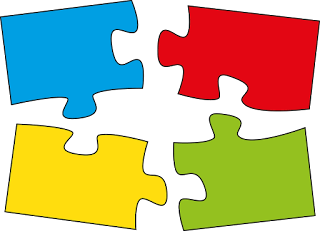Blogging is not about writing, but about thinking, brainstorming, innovating and sharing.
The “Future of CIO” Blog has reached 2.8 million page views with 5300+ blog posting in 59+ different categories of leadership, management, strategy, digitalization, change/talent, etc. The “Digital Master” book series includes 27 books to share insight from the multidimensional digital lens and perceive the multi-faceted impact the digital era upon us is making to the businesses and society. The content richness is not for its own sake, but to convey the vision and share the wisdom. Here is the weekly insight of digital leadership, IT Management, and Talent Management.
CIO as "Chief Insight Officer": Is IT Management a Science or an Art? IT management success directly impact the organization’s bottom line efficiency and top-line growth, especially large, complex IT-led business initiatives, which have a very low success rate to reach customer expectation. So what’re the root causes, and is IT management science or art?
Build a Future-Oriented “Synthetic Board” The directorship in the modern organization plays a significant role in business advising, strategy oversight, and performance monitoring, etc. Due to the “VUCA” characteristics -Complexity, Uncertainty, Ambiguity, and Velocity of the Digital Era, BoDs should also set tones for changes and digital transformation. An effective board needs to practice synthetic leadership, enables and directs management towards good outcomes, advocate synthetic problem-solving, and ensure the business is on the right track to reach well-defined business goals and maximize its digital potential.?
A Connective Mind Sparking Creativity Human minds are perhaps one of the most powerful but mysterious things in the universe, as they continue to imagine and invent things for changing the world. The fact is that the world now becomes more advanced, complex, hyperconnected, and dynamic than ever. Creativity is about connecting unusual dots, the connective mind is in demand to sparking creativity and foster innovation.
CIO as “Chief Innovation Officer”: How to Unleash IT potential in the Digital Era? Nowadays, information is permeating into every corner of the organization, and digital technologies bring unprecedented convenience to both our lives and businesses. Modern IT is not equal to IT modernization, it is the key differentiator of the business to “reimagine what is possible.” To keep IT relevant, CIOs need to think and act like “Chief Innovation Officer”: Running IT as the business in the business to reach its full potential.
Leveraging "Sense and Sensitivity" to Experience Digital Digital transformation represents a break from the past, with a high level of impact and complexity. It is the radical change which cannot be just another thing that needs to be accomplished, it has to be woven into the collective mindsets, communications, processes, and actions of the organization. The goal for running a dynamic digital business is to create an organization where change is the norm and happens the whole time, thereby, delivering faster and increasing market share as well as improving the overall business maturity. The transformative effort needs to be undertaken as the means of getting to defined competencies to accomplish the defined business goals. There are both hard and soft factors, the art and science of Change Management. How to leverage "sense and sensitivity" to handle the ebbs and flows of change, experience digital and drive business transformation effortlessly?
Blogging is not about writing, but about thinking and innovating the new ideas; it’s not just about WHAT to say, but about WHY to say, and HOW to say it. It reflects the color and shade of your thought patterns, and it indicates the peaks and curves of your thinking waves. Unlike pure entertainment, quality and professional content takes time for digesting, contemplation and engaging, and therefore, it takes the time to attract the "hungry minds" and the "deep souls." It’s the journey to amplify diverse voices and deepen digital footprints, and it's the way to harness your innovative spirit.
The “Future of CIO” Blog has reached 2.8 million page views with 5300+ blog posting in 59+ different categories of leadership, management, strategy, digitalization, change/talent, etc. The “Digital Master” book series includes 27 books to share insight from the multidimensional digital lens and perceive the multi-faceted impact the digital era upon us is making to the businesses and society. The content richness is not for its own sake, but to convey the vision and share the wisdom. Here is the weekly insight of digital leadership, IT Management, and Talent Management.
CIO as "Chief Insight Officer": Is IT Management a Science or an Art? IT management success directly impact the organization’s bottom line efficiency and top-line growth, especially large, complex IT-led business initiatives, which have a very low success rate to reach customer expectation. So what’re the root causes, and is IT management science or art?
Build a Future-Oriented “Synthetic Board” The directorship in the modern organization plays a significant role in business advising, strategy oversight, and performance monitoring, etc. Due to the “VUCA” characteristics -Complexity, Uncertainty, Ambiguity, and Velocity of the Digital Era, BoDs should also set tones for changes and digital transformation. An effective board needs to practice synthetic leadership, enables and directs management towards good outcomes, advocate synthetic problem-solving, and ensure the business is on the right track to reach well-defined business goals and maximize its digital potential.?
A Connective Mind Sparking Creativity Human minds are perhaps one of the most powerful but mysterious things in the universe, as they continue to imagine and invent things for changing the world. The fact is that the world now becomes more advanced, complex, hyperconnected, and dynamic than ever. Creativity is about connecting unusual dots, the connective mind is in demand to sparking creativity and foster innovation.
CIO as “Chief Innovation Officer”: How to Unleash IT potential in the Digital Era? Nowadays, information is permeating into every corner of the organization, and digital technologies bring unprecedented convenience to both our lives and businesses. Modern IT is not equal to IT modernization, it is the key differentiator of the business to “reimagine what is possible.” To keep IT relevant, CIOs need to think and act like “Chief Innovation Officer”: Running IT as the business in the business to reach its full potential.
Leveraging "Sense and Sensitivity" to Experience Digital Digital transformation represents a break from the past, with a high level of impact and complexity. It is the radical change which cannot be just another thing that needs to be accomplished, it has to be woven into the collective mindsets, communications, processes, and actions of the organization. The goal for running a dynamic digital business is to create an organization where change is the norm and happens the whole time, thereby, delivering faster and increasing market share as well as improving the overall business maturity. The transformative effort needs to be undertaken as the means of getting to defined competencies to accomplish the defined business goals. There are both hard and soft factors, the art and science of Change Management. How to leverage "sense and sensitivity" to handle the ebbs and flows of change, experience digital and drive business transformation effortlessly?
Blogging is not about writing, but about thinking and innovating the new ideas; it’s not just about WHAT to say, but about WHY to say, and HOW to say it. It reflects the color and shade of your thought patterns, and it indicates the peaks and curves of your thinking waves. Unlike pure entertainment, quality and professional content takes time for digesting, contemplation and engaging, and therefore, it takes the time to attract the "hungry minds" and the "deep souls." It’s the journey to amplify diverse voices and deepen digital footprints, and it's the way to harness your innovative spirit.


































































